Starting Monday, Google began to display an image based shopping OneBox, changing the SEO landscape for any product or eCommerce related site. The shopping OneBox seems to be in high rotation, usually appears within the top three results, takes up more vertical real estate and has broad coverage over product searches.
What is a Google OneBox?
When Google wants to display information that is not exactly in the algorithm, but is related to the query, it does so through what is called a OneBox presentation. Think of it as a promotional unit.
The OneBox terminology was used by Google when the unit was first introduced and seems to have survived, at least externally. SearchEngineWatch (sorta) confirmed the OneBox terminology in an interview with Google Product Marketing Director Debbie Jaffe in 2006. (Jaffe never actually refers to it as OneBox.)
OneBox can display a variety of different information from news to weather to books to products and can be placed anywhere from the top to the bottom of a result page.
The OneBox presentation is controversial because it creates a very prominent listing that provides … cherry-picked results. As an example, Google has begun to implement a health OneBox.
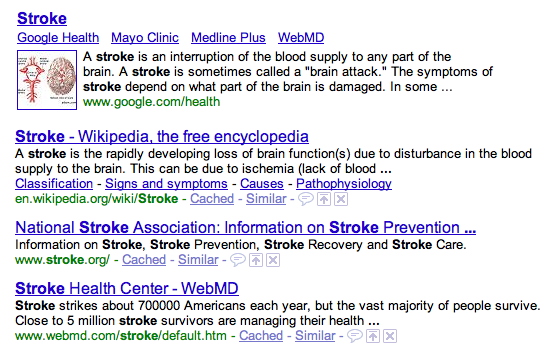
The health OneBox for the query ‘stroke’ brings Mayo Clinic, Medline Plus and WebMD to the top of the page instead of where they’d wind up under natural results. In this case WebMD would be 3rd, Medline Plus 6th and Mayo Clinic 11th.
Google Shopping OneBox
The shopping OneBox or product OneBox brings the same cherry-picking controversy to the surface. It’s exacerbated by the fact that Google Product Search essentially competes with shopping comparison engines and review sites, many of whom have spent time and effort to perform search engine optimization.
If you’re not participating in Google Product Search (aka Google Base) then you’re never going to be in the shopping OneBox. And even if you do participate, there’s no guarantee that your listing will be featured. Here’s an example of the shopping OneBox for the query ‘proform 980 cs treadmill’.
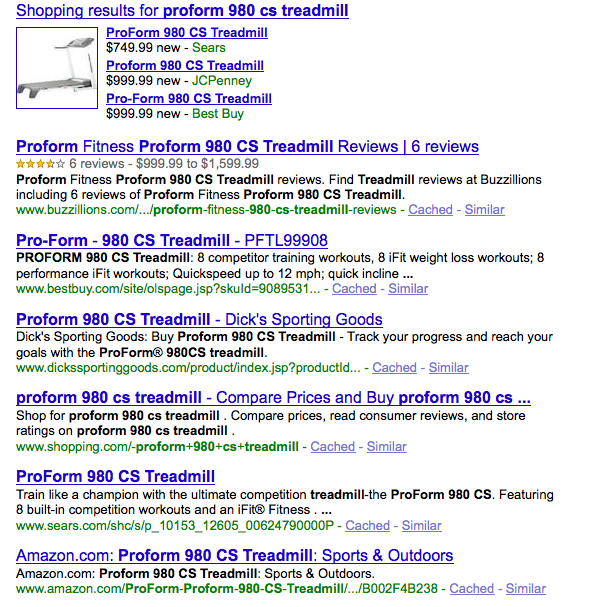
Sears, JCPenney and Best Buy are all featured in the shopping OneBox. At least Sears and Best Buy have a natural listing but JCPenney has essentially circumvented normal SEO and is now a preferred result for this query.
Sites such as Buzzillions, Dick’s Sporting Goods, Shopping.com and even Amazon suddenly lose out on this query despite matching and delivering a very good experience for this product search. Even Best Buy might not be thrilled since they’d be first retailer listed and not the third if the OneBox wasn’t presented.
Today, Google is a huge part of any product based business, so changes like this will have an immediate impact on traffic and sales.
Shopping OneBox Evolution
The evolution of the shopping OneBox shows an increasing interest by Google in this vertical. First there was the old Froogle presentation.
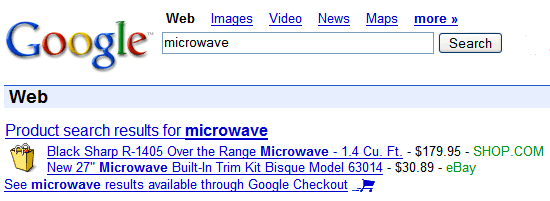
Image from Google Operating System.
In 2008 Google experimented with a compact version with a product image.
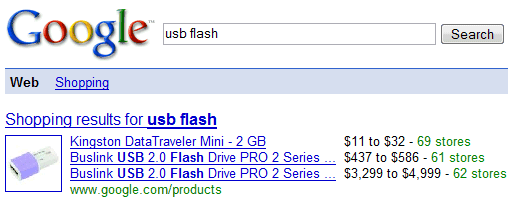
Image from Google Operating System.
By early 2009 Google had reverted to a slightly less compact text version again.
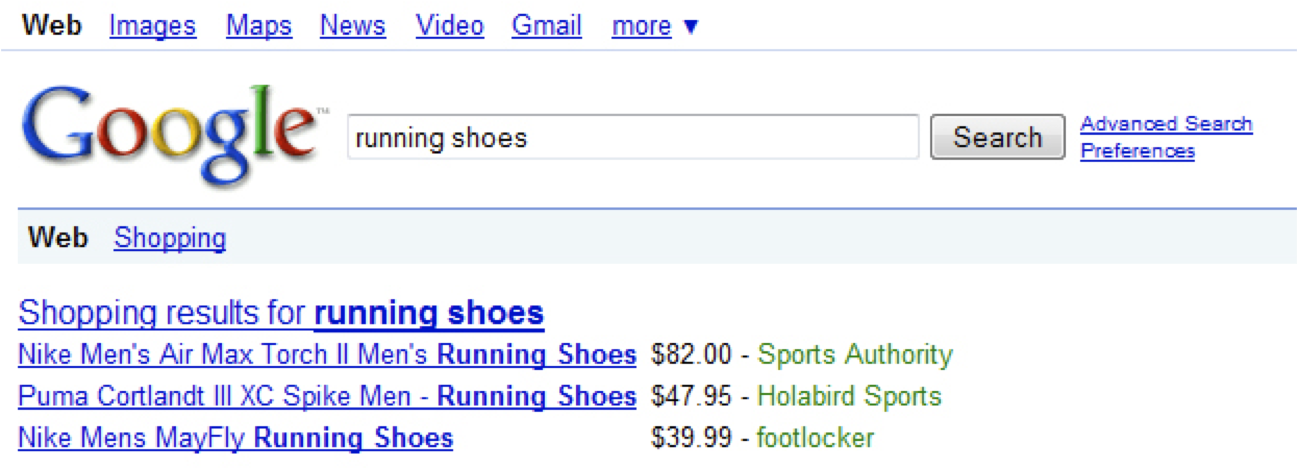
Image from Best Rank.
Now the shopping OneBox has a large product image and is not compact at all, taking up a tremendous amount of real estate.

Importance of Shopping OneBox
On September 2nd, the Google Base blog announced new features for marketplace and aggregators on Google Product Search. This is a real change from the initial launch of Google Base, where Google seemed interested in having individual sellers upload to Base and use Google Checkout on their sites – middlemen be damned!
The change in direction for Google Base coupled with the focus Bing has had on shopping seem to have accelerated Google’s interest in the vertical. They’ve been toying with it for many years but have never really made it a priority.
The new shopping OneBox indicates that might be changing.
The Next Post: Short Clicks versus Long Clicks
The Previous Post: SEO Judo

1 trackbacks/pingbacks
Comments About Image Based Google Shopping OneBox
// 1 comments so far.
Rick // July 15th 2010
AJ –
Just came across the post doing a search for more info on Google Shopping:) Nice historical data, seems like the program is really picking up speed with often three product images rather than just one.
If you feed your products to Amazon, they then can get picked up in Shopping with the added benefit of all of the reviews and trust Amazon brings.
Sorry, comments for this entry are closed at this time.
You can follow any responses to this entry via its RSS comments feed.